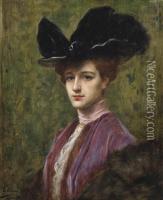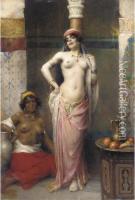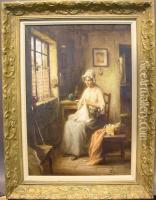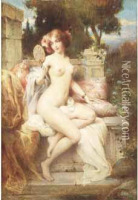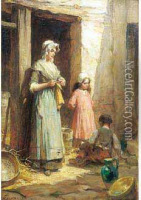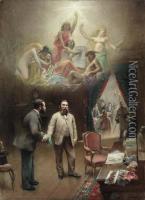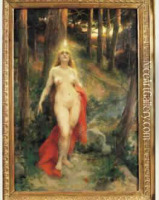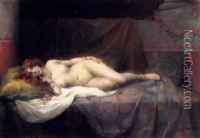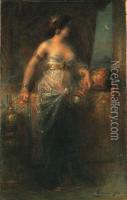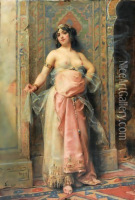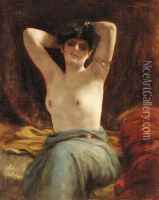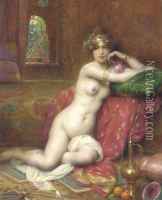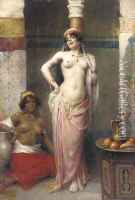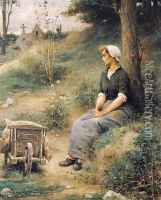Henri Adriene Tanoux Paintings
Henri Adrien Tanoux was a French artist born in Marseille in 1865. He was best known for his work as a painter, with a particular focus on genre scenes, portraits, and landscapes. His artistic style was rooted in the academic tradition, and he often portrayed subjects from history and mythology, as well as everyday life in France at the turn of the 20th century.
Tanoux studied art at the École des Beaux-Arts in Marseille before moving to Paris to further his training. He was a student of the prominent French painters Jean-Léon Gérôme and Léon Bonnat, both of whom were influential in shaping his technique and artistic outlook. The teachings of Gérôme, known for his neoclassical style, and Bonnat, recognized for his realistic approach, were evident in Tanoux's work which often combined classical themes with a naturalistic rendering.
Throughout his career, Tanoux exhibited his works at various salons and was well received by critics and the public alike. His paintings were appreciated for their detail, composition, and the delicate interplay of light and shadow. He was adept at capturing the textures of fabrics and the subtleties of the human form, which made his portraits particularly notable.
In addition to his painting, Tanoux also worked on decorative projects and received commissions for public and private spaces, reflecting the demand for his refined style during his lifetime. Despite the popularity of Impressionism and the advent of modern art movements during his career, Tanoux remained committed to the academic style of painting.
Henri Adrien Tanoux passed away in 1923. Although he is not as widely known today as some of his contemporaries, his work remains a testament to the academic art tradition of late 19th and early 20th century France. His paintings can be found in various art collections and continue to be appreciated by those who value the craftsmanship and classic beauty of academic art.

